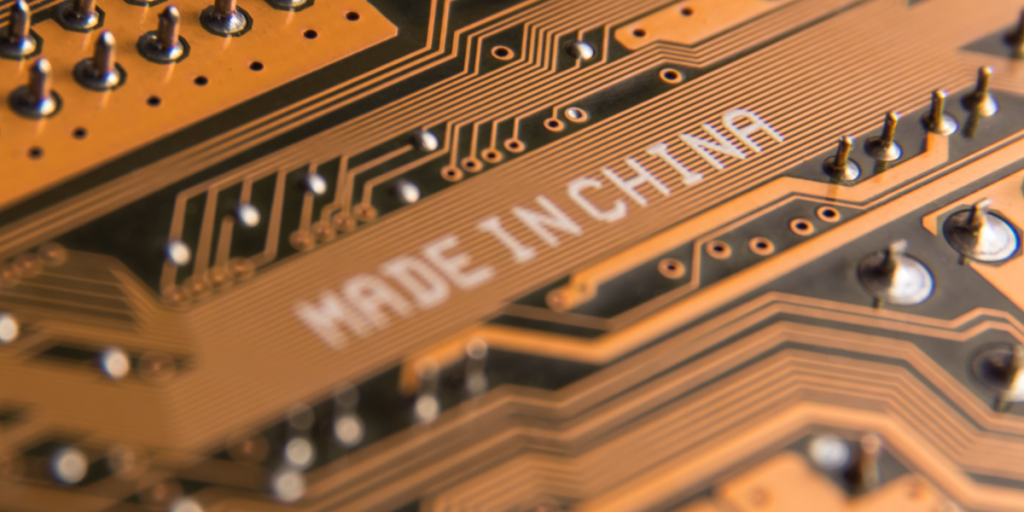For years, Washington urged allies to be wary of China’s overseas lending. But a sweeping new investigation shows the U.S. itself has quietly become the largest beneficiary of all — and much of the money flowed into strategically sensitive industries.
Others are reading now
For years, Washington urged allies to be wary of China’s overseas lending. But a sweeping new investigation shows the U.S. itself has quietly become the largest beneficiary of all — and much of the money flowed into strategically sensitive industries.
Researchers say the findings raise urgent questions about who ultimately controls key technologies and what Beijing may have gained in the process.
China Money Exposed
AidData, a research lab at the College of William & Mary, told the Associated Press it uncovered $200 billion in loans from Chinese state banks to U.S. businesses over 25 years. The funds were often disguised through shell companies in the Cayman Islands, Bermuda, Delaware and other secrecy jurisdictions, obscuring their Chinese origins.
A significant share supported Chinese firms seeking stakes in American companies tied to critical technologies — including robotics, semiconductors and biotechnology. The lending network, AidData found, extended far beyond developing nations, reaching wealthy allies such as the U.K., Germany, Australia and the Netherlands.
“China was playing chess while the rest of us were playing checkers,” former White House investment adviser William Henagan told AP reporters. He warned that hidden leverage over such sectors could shape future conflicts. “Wars will be won or lost based on whether you can control products critical to running an economy.”
Increased Scrutiny
Also read
The U.S. continues to welcome most foreign investment, and President Donald Trump has openly courted it. But Chinese money has drawn more suspicion as geopolitical tensions deepen. Lending from state-owned institutions — overseen by Beijing’s central government and the Communist Party’s Central Financial Commission — is seen as particularly sensitive.
AidData’s report estimates China issued more than $2 trillion in state-backed loans worldwide between 2000 and 2023, twice the previous estimates. Much of the financing in wealthy countries centered on minerals and advanced technologies needed for defense systems, telecommunications and next-generation manufacturing.
“The U.S., under both Biden and Trump, have been beating this drum for more than a decade that Beijing is a predatory lender,” AidData’s executive director Brad Parks told AP. “The irony is very rich.”
Shell Structures and Secrecy
Much of China’s lending was hidden from regulators and researchers because it moved through layered structures meant to resemble private Western financial activity. Scott Nathan, former head of the U.S. International Development Finance Corp., said the lack of transparency reflects deliberate design.
“There is a complete lack of transparency that speaks to the lengths to which China goes…to make it extremely difficult to come up with this full picture,” he said.
Also read
Regulatory tools such as the Committee on Foreign Investment in the United States have strengthened since 2020, tightening reviews for sensitive sectors. But Beijing has adapted by expanding its overseas banking footprint, creating more than 100 foreign branches capable of issuing offshore loans that mask their true source.
“In places where there are more cops on the beat,” Parks said, “it has found ways to work around barriers to entry.”
Where the Money Went
AidData’s report shows the impact stretched across the U.S., especially in the Northeast, Great Lakes, Gulf Coast and West Coast. Many cases involved advanced technology or industries considered vital to national security.
— In 2015, Chinese state lenders issued $1.2 billion to help a private Chinese buyer acquire 80% of Ironshore, a U.S. insurer whose clients included CIA and FBI personnel. The financing came through a Cayman Islands entity, leaving U.S. regulators initially unaware of state involvement. Officials later ordered divestment after concluding China could access sensitive information.
— That same year, China outlined its manufacturing roadmap “Made in China 2025,” targeting semiconductors, biotechnology and robotics. In 2016, the Export–Import Bank of China lent $150 million to help a Chinese buyer acquire a Michigan robotics company. AidData found that after 2025 planning began, the share of acquisitions involving sensitive technologies jumped from 46% to 88%.
Also read
— In 2017, investigators halted a Delaware private equity firm’s attempted purchase of a U.S. chipmaker after discovering both buyer and seller were ultimately owned by a Chinese state enterprise. The same firm later bought a U.K. semiconductor company — which British authorities forced it to divest after uncovering its ownership.
— In 2022, U.K. regulators ordered a Chinese firm to sell a chip design company whose components appeared in Apple phones and could be adapted for military systems. China had purchased the company through a Netherlands-based subsidiary now accused of withholding critical semiconductors in U.S.-China trade tensions.
Tracking the Network
AidData’s review required combing through filings and disclosures across more than 200 countries. The team expanded dramatically as researchers discovered state-backed loans were flowing into advanced economies where technology acquisition could strengthen China’s strategic position.
The findings suggest China has shifted its use of state credit — from development-focused lending to securing control over global supply points.
“There’s global concern that this is part of a concerted effort to gain control over economic chokepoints and use this leverage,” said Brad Setser, an adviser to the U.S. Trade Representative. “It’s important that we understand what they’re doing, and they don’t make it easy.”
Also read
Sources: The Associated Press, Fortune
This article is made and published by Asger Risom, who may have used AI in the preparation


